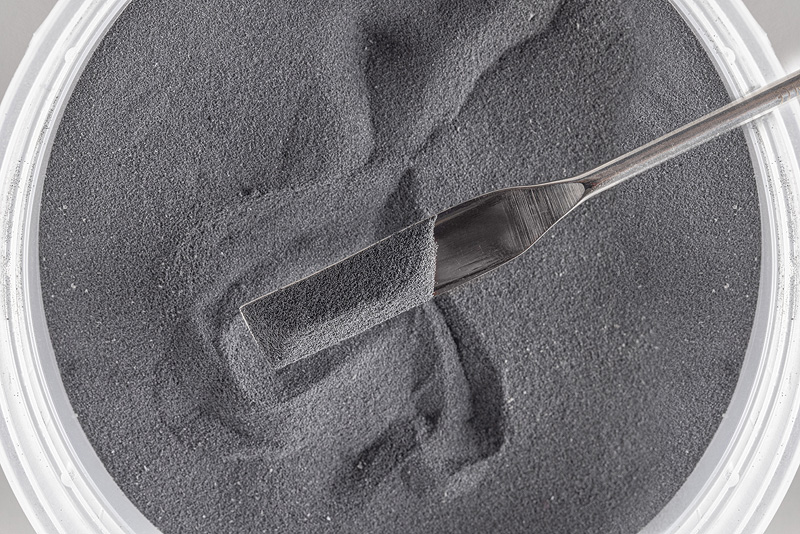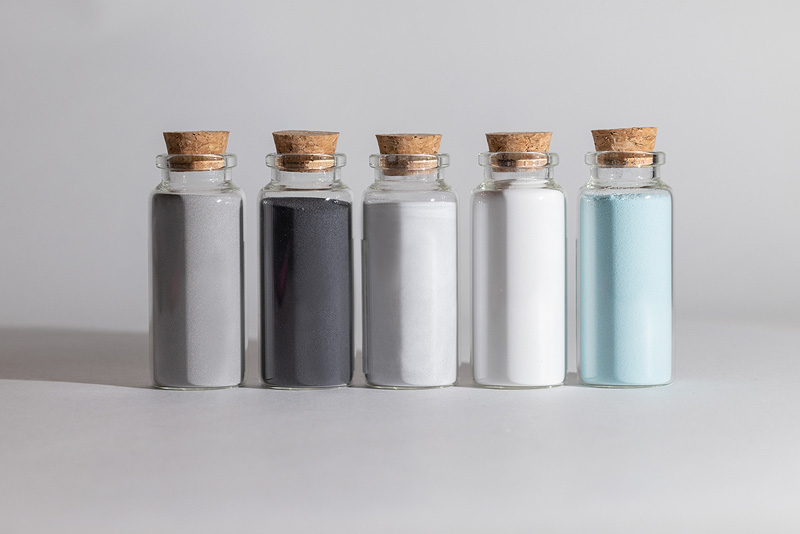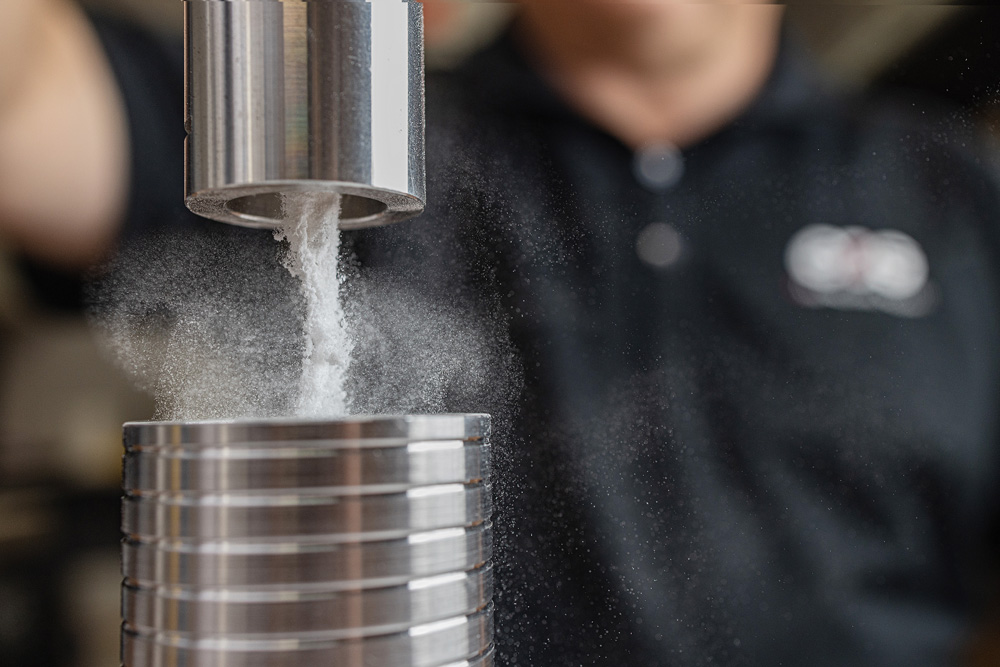Let our team identify or engineer
the perfect solution for your application.
For 3D printing to become truly competitive, it must be compatible with a wider range of materials. ALM helps solve this challenge with an extensive portfolio of materials for laser sintering that add color, strength, elasticity, and fire retardation, among other unique properties.
For decades, materials have been one of 3D printing’s biggest pain points. Traditional manufacturing techniques offer a plethora of materials, and many can be custom formulated for specific uses. Common polymers for example, can be used with a wide range of processing technologies including extrusion, blow molding, and injection molding. Those materials can be mixed in a wide range of colors and stabilized to reduce degradation from heat and light. They can also be mixed with minerals and fibers to further enhance their performance.
To level the playing field, additive manufacturing must offer similar capabilities. For nearly two decades, Advanced Laser Materials (ALM) has helped the industry overcome this important challenge by developing unique polymers in a wide variety of material categories.
Composition materials (composites) combine the physical and chemical properties of two or more notably dissimilar materials to form a new substance with enhanced performance characteristics. Often, they are stronger, lighter, more durable, and in some cases, less expensive than other options.
ALM offers many composite polymers including PA 602-CF and PA 603-CF which are Nylon 12 based and mixed with carbon fiber. Both offer high detail and good surface finish, but with a higher carbon fiber content (33% vs. 23%), PA 603-CF offers even better dimensional stability at elevated temperatures. ALM also offers several composites mixed with hollow glass spheres. They offer good strength-to-weight ratio properties, long-term wear resistance, and are optimized for stability and recyclability. Further, ALM offers polymers mixed with other materials such as aluminum for a metallic gray surface finish and minerals for their anisotropic mechanical properties.

Many of the polymers offered by ALM utilize Nylon PA 11 or PA 12 as a base material. PA 12 is one of the most commonly used with laser sintering. It’s petroleum based, offers good mechanical properties and a relatively low melting point. PA 11 by contrast, is a bio-based material made from castor beans, making it more environmentally friendly. It also offers a different set of chemical properties including higher impact strength, better isotropic performance, abrasion and fatigue resistance, and improved ductility.
Through its unique formulations, ALM enhances these materials in several important ways. Nylons are typically neutral (off-white) in color. ALM offers its formulations in different colors including Nylon 11 based PA 850, which is melt-mixed black and PA 860 which is white. Both are easy to process on most laser sintering platforms and offer excellent mechanical properties, including a smooth surface finish and excellent feature detail.

Beyond Nylons, ALM provides materials that are strong and durable, yet also flexible. For example, TPE 410 is a thermoplastic elastomer that’s ideal for small batch processing of elastic parts. TPE 210-S is infiltrated with polyurethane, enabling extreme elongation while also providing even higher toughness and abrasion resistance.
Heat resistance is also an area of expertise. ALM’s FR-106 and PA 606-FR are fire retardant PA 11 and PA 12 materials that offer great mechanical properties while also being the only laser sintered materials to achieve the FAR 25.853 sixty second vertical burn requirement. HT-23, on the other hand, is a PEKK resin mixed with 23% carbon fiber. It is isotropic, chemical resistant, and inherently flame retardant.

While ALM’s existing portfolio of materials is broad and deep, there are many times where manufacturers require unique mixtures to meet specific applications. ALM works with clients to develop custom materials, taking a four-phased consultative approach, starting with discovery, then moving on to formulation and validation, and finally production.
Interested in learning more about the complete catalog of materials offered by ALM? Browse the ALM material catalog here.
Have a unique application? Chat with a material expert and learn more about ALM’s custom material development services here.
Let our team identify or engineer
the perfect solution for your application.